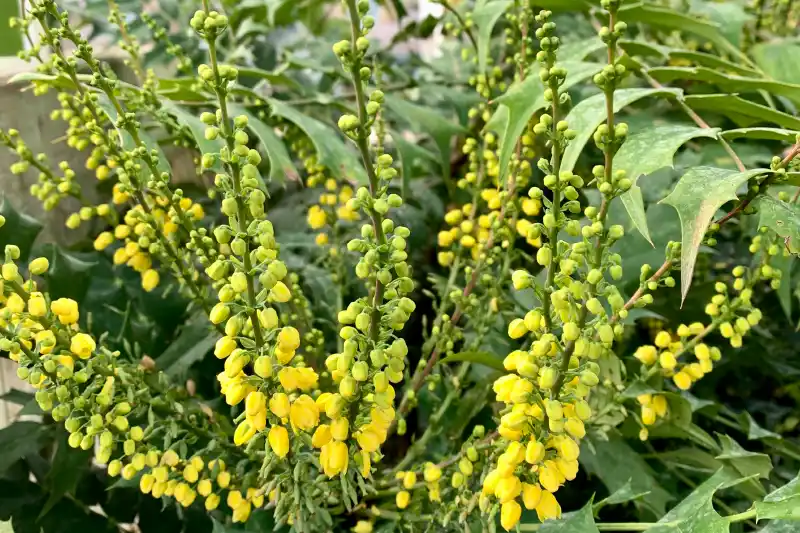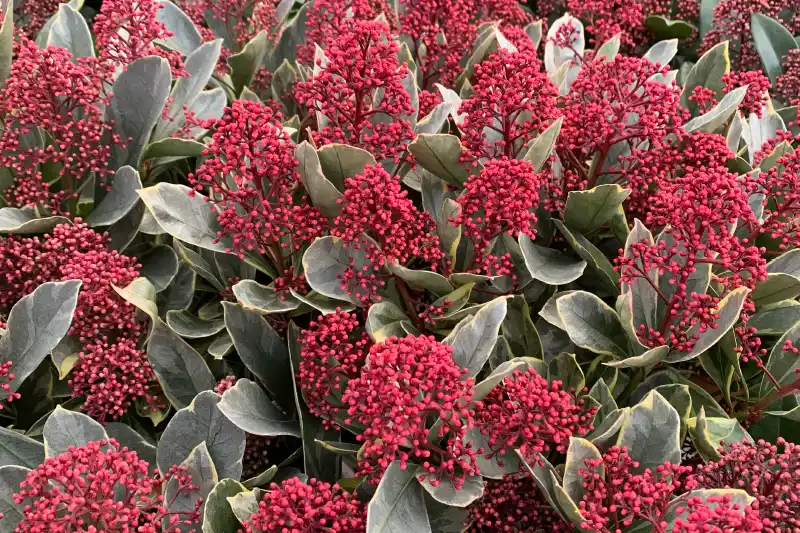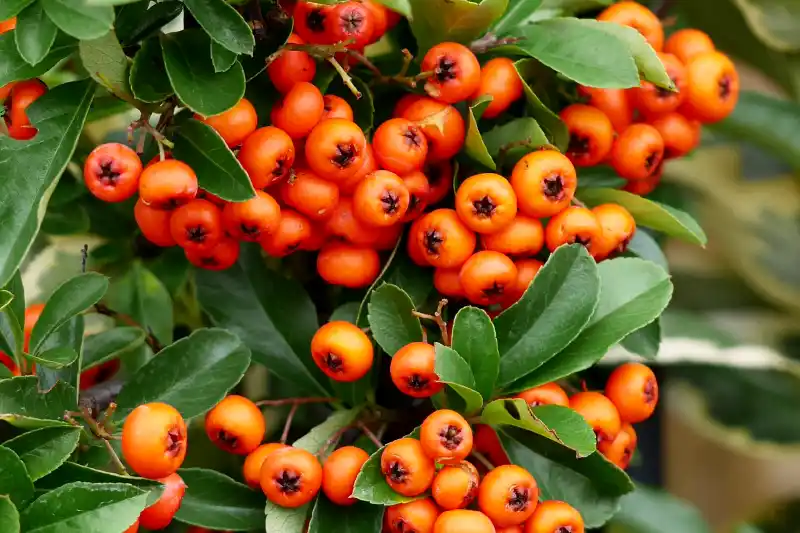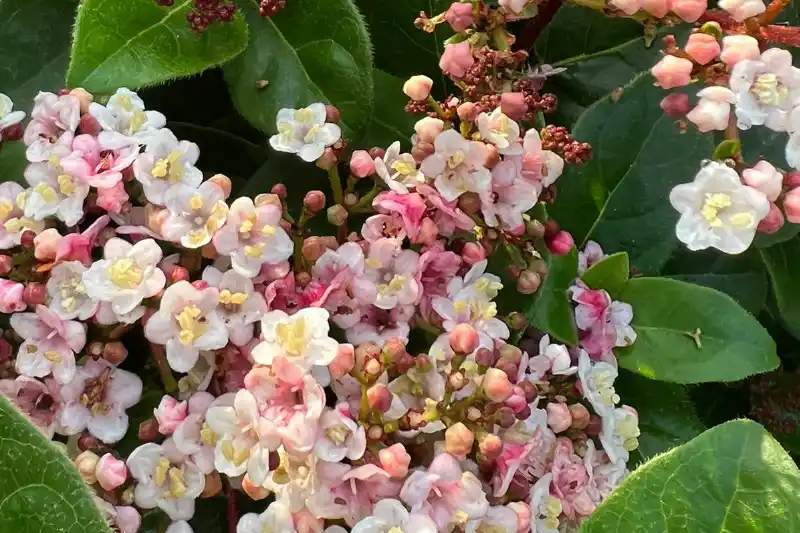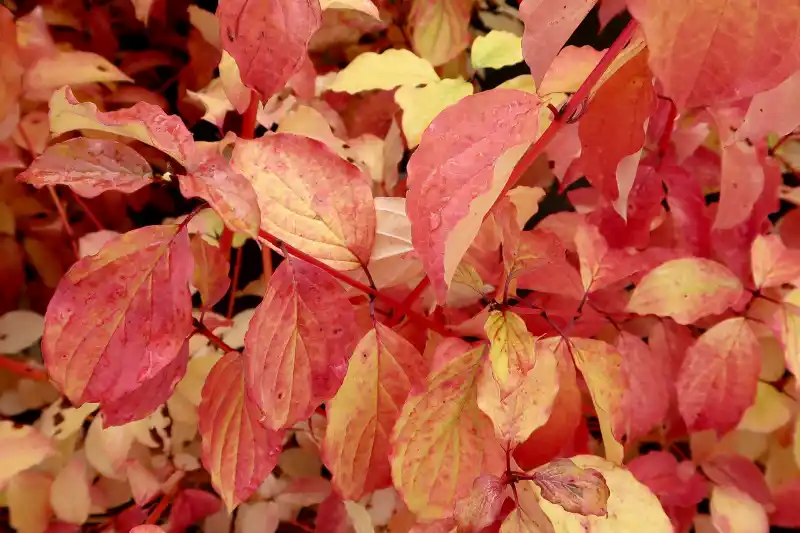By incorporating plants that have adapted to be at their best when everything else is dormant, you can transform your outdoor space into a captivating winter wonderland. Here are some stunning plants that will add colour, texture, and fragrance to your garden, even when the temperatures drop.
Winter flowering plants
Winter flowering shrubs and perennials are a great investment, performing year after year when there’s little else of interest around. They can also be a lifeline for bees and other pollinators during mild spells. Here’s our favourites to inspire you to extend the flowering season in your own garden.
Hellebores
These elegant, undemanding flowers, often called Christmas roses, bloom in shades of white, pink, purple, and green. With their bold foliage, they thrive in shady areas and add a touch of winter magic to your garden. Tolerating a wide range of aspects from full sun to full shade, they thrive in moisture retentive soil but will struggle in boggy conditions.
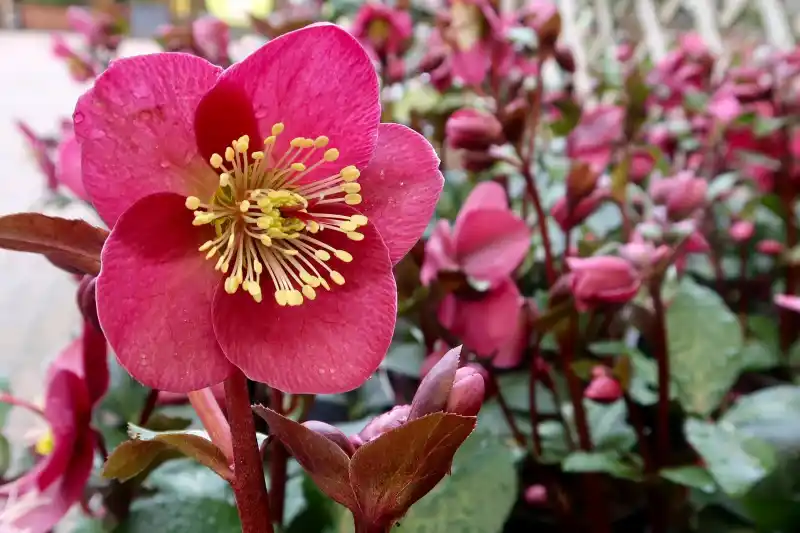 Autumn flowering Camellias (Sasanqua Camellias)
Autumn flowering Camellias (Sasanqua Camellias)
Flowering from November onwards, these beautiful shrubs produce stunning blooms in a variety of colours, from white, all shades of pink to vibrant red. They prefer acidic soil and do well in full sun rather than dappled shade.
Mahonia
These architectural plants bear impressive long spikes of scented, bee friendly yellow flowers over the winter months, followed by small dark fruits in the spring. With their evergreen holly-like leaves, they are excellent for the back of a border on well-draining soils in light shade.
Snowdrops
Flowering from mid to late winter, Snowdrops herald the coming of spring. Forming a carpet of green foliage supporting lantern-like white flowers, these perennial bulbs are a must for planting under deciduous shrubs and trees. There’s many different varieties available with different sized flowers and markings, making them collectable as a species. Look out for Polar Bear, Snow Fox and Beluga as they are more robust and have longer lasting flowers. All Snowdrops prefer moist, well drained soils and can be deadheaded after flowering to help them concentrate their energy back into the bulb for a better display the following year.
Whilst our list covers our winter flowering favourites, also consider Winter Jasmine for its masses of bright yellow flowers from November onwards. Being tough and hardy, it’s ideal for growing on banks and slopes, as well as being trained against a wall or being allowed to tumble from a raised bed.Another winter beauty to consider is the Chinese Witch Hazel (Hamamelis species). With its primeval flowers in colours ranging from bright yellow to warm orange and ruby red, they look stunning on a clear winter day when they catch the low sun. They’re versatile shrubs, coping with all soil types in full sun or partial shade.
Best of the berries
Berry-producing shrubs are a valuable addition to a winter garden, offering both visual appeal and a much-needed food source for birds during the lean winter months. Beyond their practical use, these shrubs also add accents of colour to an otherwise dormant space. Here’s our best of the bunch, but remember, these berries are only for wildlife, not human consumption.
Skimmia
Easy to look after, this evergreen shrub produces clusters of red berries and is also prized for its fragrant flowers.
The berries will develop best when they are grown in the shade, with a lightly acidic soil. If the leaves turn yellow, the ground is not acidic enough, so add some leaf mulch or ericaceous compost to improve the situation.
Most Skimmia varieties are male or female, so you need to grow two types to ensure the females produce their bright red berries. Male varieties include Rubella, Fragrans, Fragrant Cloud, Kew Green and Magic Marlot. All these make excellent pollinators for the female varieties Nymans, Wakehurst White and Red Riding Hood, which will produce berries.
Holly (Ilex)
A staple of the festive season, Holly’s glossy evergreen leaves and bright red berries make it a winter classic. It can be used as a hedge, a standalone shrub, or even as a houseplant. There are over 570 species worldwide but the standard variety ‘aquifolium’ is the native one to our countryside. The female of the species produces large red berries, providing essential food in late winter for blackbirds and thrushes.
Cotoneaster
This diverse group of versatile shrubs produce masses of red or orange berries and are a popular choice for hedges and groundcover. Easy to grow, they’ll thrive in moist, free-draining soils in full sun to partial shade. Their flowers are great forage for bees, and the subsequent berries are regularly visited by robins, blackcaps and bullfinches.
Pyracantha
A versatile shrub that offers both security and beauty, Pyracantha’s long thorns make it an ideal choice for creating impenetrable hedges, protecting walls, fences, or vulnerable ground-floor windows. Despite its formidable defence, it’s easy to care for and responds well to pruning. If you’d prefer the berries with less thorns, look out for a variety called ‘Red Star’.
Beyond its security benefits, Pyracantha is a haven for wildlife. Its vibrant berries, particularly the red varieties, provide a vital winter food source for birds like blackbirds and thrushes. As the winter progresses, birds will move on to the orange and yellow berries, making Pyracantha a colourful and beneficial addition to your garden.
Fragrant winter flowering plants
It takes many people by surprise to hear that some of the best scented shrubs are winter flowering. Their strong fragrance is a ploy to attract pollinators when there’s fewer food sources around. Their scent is strongest on milder days, making them perfect for paths and doorways and you can also cut sprigs to bring inside to perfume your home.
Winter Box (Sarcococca species)
Useful as a mid-height ground cover for darker parts of the garden, Winter Box makes a compact, evergreen shrub that bears clusters of creamy-white, strongly scented flowers from deepest winter into early spring. This bushy shrub has upright stems clothed with slender, dark green leaves, making it ideal as a low informal hedge. It does best in part-to-full shade and is ideal for growing in borders or a woodland garden.
Viburnum tinus
A versatile, easy to grow, hardy evergreen shrub, and popular choice for screening and informal hedges, Viburnum tinus offers flattened clusters of white scented flowers from Winter into Spring. The flowers contrast well with its dark evergreen foliage, making it ideal for all aspects, from full sun to partial shade. Look out for varieties such as the compact growing ‘Eve Price’, and ‘Lisarose’ whose flowers turn deep brick-red as the temperature drops, followed by dark blue berries in mid-spring.
Edgeworthia
All Edgeworthia are highly ornamental, producing masses of fragrant yellow flower pom-poms on architectural cinnamon-coloured stems in late winter. ‘Honey Sunshine’ is a new introduction for 2025, with the flowers becoming a magnet for early pollinators. After flowering, large, exotic-looking leaves emerge, creating a lush and tropical appearance throughout the summer.
Being a woodland plant from the Chinese Himalayas it prefers a fertile, free draining acid soil in full sun or light dappled shade. It can tolerate temperatures down to -5°C, but in colder areas it should be planted against a sunny, south-facing wall.
Two other species to also consider are Viburnum x bodnantense and Winter Sweet (Chimonanthus).This Viburnum is a deciduous shrub, bearing clusters of sweetly scented pink or white flowers on bare stems. The variety ‘Dawn’ is deep pink in bud, opening to white flowers flushed with pink. They need plenty of space to grow and cope well in both sun and partial shade.Winter Sweet (Chimonanthus) is renowned for its incredibly sweet, spicy scent, though this upright-growing shrub does need the shelter of a sunny wall to thrive and bloom well. The waxy-petalled flowers are creamy yellow with maroon centres, borne on the leafless stems from November to March. Can be clipped into a fragrant hedge.
Colourful winter stems
Colour doesn’t just come from leaves and flowers. Some deciduous shrubs offer bright, colourful stems, creating focal points or blocks of colour when planted together.
Cornus (Dogwood)
With varieties offering vibrant red, lime-green, purple or orange stems, Cornus adds structural colour to winter gardens. They are low-maintenance and can be used as hedges or standalone specimens and offer gorgeous autumn leaves too.
Colour comes from the previous year’s stems, so prune hard in late February to encourage new growth, masses of pollinator friendly flowers in mid-spring and colourful stems for the following winter.
Acer Sango-kaku (Coral Bark Maple)
This fabulous deciduous Japanese acer offers something in every season, with vibrant coral-red young branches bearing 5-lobed leaves which open pinkish-gold, becoming green in summer and golden-yellow in autumn.
Look out for the white stemmed Ghost bramble (Rubus thibetanus), with its silver-green fern-like foliage that falls away in autumn to reveal heavily white-bloomed stems. They pair well with the black leaved Ophiopogon, as seen at the Sir Harold Hiller Winter Garden in Hampshire.
Structural evergreens
Evergreen shrubs are key to providing structure in a garden, acting as a background foil for flowers and colourful stems. They can also be used to screen areas off or soften the edges of hard landscaping features such as fences, walls and buildings.
The key to using evergreens in the winter garden is to make use of the different leaf shapes as a textural element, as well as the different shades of green, or variegation, to provide contrast to the showier plants that you’d like to grow.
Great candidates to consider are the dwarf conifers, such as Pinus mugo and its cultivars, the smaller types of Pinus strobus and the ground covering Junipers, ‘nana’ and ‘Blue Chip’.
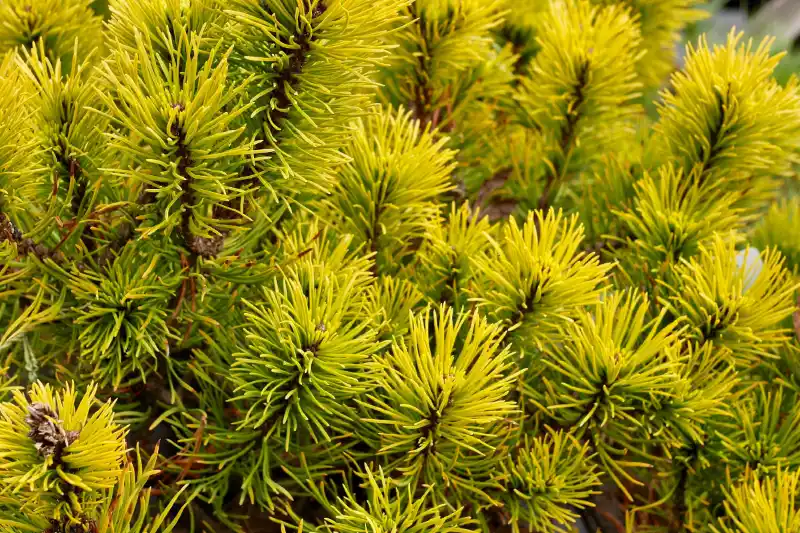 Many of the flowering and scented shrubs mentioned are also evergreen. Always select ones that will thrive in your aspect and soil type, and maybe choose ones that can offer another element, such as flowers or habitat for hedge birds.
Many of the flowering and scented shrubs mentioned are also evergreen. Always select ones that will thrive in your aspect and soil type, and maybe choose ones that can offer another element, such as flowers or habitat for hedge birds.
By incorporating some of these winter-friendly plants into your plot, you can extend your garden’s enjoyment well beyond autumn and help your local wildlife when they need it the most. So why not start planning your winter garden today?

